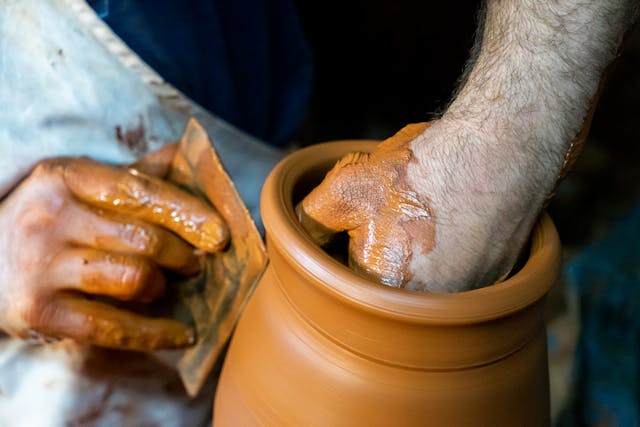Mruttika 2025: Celebrating Odisha’s Timeless Terracotta and Pottery Traditions

Introduction to Mruttika 2025
Mruttika 2025 is poised to be a landmark event that brings to the forefront the unique terracotta and pottery traditions of Odisha, a state renowned for its rich cultural heritage. This annual exhibition will not only showcase exquisite works of art but also serves as a vital platform for promoting local artisans and preserving their crafts. The event is expected to attract a wide range of attendees, including art enthusiasts, tourists, and dignitaries, all coming together to appreciate the intricate beauty and historical significance of terracotta.
The inauguration of Mruttika 2025 will be a momentous occasion, attended by key dignitaries from various sectors, including government officials, cultural ambassadors, and representatives from organizations dedicated to the promotion of local arts. Their presence underscores the importance of supporting homegrown crafts and highlights a collective commitment to the sustainability of Odisha’s artistic traditions. The event promises to feature a diverse array of terracotta works, showcasing the ingenious techniques used by artisans who have honed their skills over generations.
Terracotta has deep historical roots in Odisha, often associated with ancient rituals and daily life. This medium has played a crucial role in the region’s artistic expression, capturing the essence of local traditions and narratives. Mruttika 2025 aims to illuminate these connections by providing a space where artisans can display their craftsmanship and engage with a broader audience. By celebrating this timeless art form, the exhibition contributes not only to the local economy but also to a renewed appreciation for the cultural narratives that terracotta embodies. The initiative reflects a growing recognition of the importance of preserving heritage while providing artisans with opportunities for growth and visibility.
The Artistry of Odisha’s Terracotta
Odisha, a state rich in cultural heritage, boasts a vibrant tradition of terracotta art that captures the essence of its history and craftsmanship. The artistry of Odisha’s terracotta is distinctive, characterized by intricate designs and a variety of techniques passed down through generations. Artisans employ traditional methods, often using hand-molding techniques to shape the raw clay, which is then adorned with elaborate carvings and embellishments. These techniques reflect not only skill but also the deep-rooted appreciation for natural beauty and storytelling inherent in Odishan culture.
The pottery produced in Odisha encompasses a wide range of items, including decorative pieces, utilitarian vessels, and ceremonial objects. Each piece is often a canvas showcasing the rich tapestry of themes drawn from mythology, nature, and rural life. The iconic use of motifs—such as peacocks, elephants, and floral patterns—demonstrates the artisans’ deep connection to their surroundings and the narratives they wish to convey through their work.
Furthermore, the unique styles of terracotta art vary across different regions of Odisha, influenced by local customs and material availability. For instance, the terracotta figurines of the Kachhi tribe are known for their vibrant surfaces and soulful expressions, while the rural potters in areas like Pipili focus on utilitarian designs that double as artistic statements. Over time, these traditional shapes and forms have adapted to contemporary artistic demands while preserving their core elements.
Modern artisans continue to innovate while keeping the essence of Odisha’s terracotta intact. This evolution is evident in the incorporation of modern techniques and experimental designs, appealing to a broader audience both locally and globally. The resilience of these time-honored practices amidst changing tastes highlights the enduring relevance of Odisha’s terracotta art in today’s artistic landscape. Embracing both tradition and innovation, Odisha’s terracotta stands as a testament to the state’s rich cultural legacy.
Impact of Mruttika on Local Artisans
The Mruttika exhibition has significantly influenced local artisans in Odisha, primarily by providing them with a vital platform to showcase their exceptional terracotta and pottery creations. This event not only highlights traditional crafts but also serves to connect artisans with a wider audience, including art enthusiasts, potential buyers, and cultural advocates. In doing so, it fosters a deeper appreciation for Odisha’s rich artistic heritage and supports the artisans’ livelihoods.
One of the participating artisans, Prakash Sahu, shared his experience from a previous Mruttika exhibition, stating, “Before Mruttika, it was challenging for us to reach customers beyond our community. This exhibition opened doors for us, and I could interact with people who admired my work.” Such testimonials are common among artisans, showcasing how the event has transformed their visibility and market access. Additionally, Mruttika’s structured approach to promoting local crafts has enhanced the capacity of these artisans to negotiate better prices for their handcrafted articles, thereby promoting economic empowerment.
The exhibition has not only promoted artistic expression but has also instilled a sense of pride among the communities involved in terracotta art. By facilitating workshops and demonstration sessions, Mruttika encourages collaborative learning, allowing newer generations to grasp traditional crafting techniques while boosting the morale and skills of existing artisans. This comprehensive engagement creates an ecosystem where artisans can thrive economically and artistically.
Furthermore, Mruttika fosters recognition beyond local boundaries. The marketing strategies employed during the exhibition help artisans establish their brands, leading to increased demand for their unique pottery. This growing recognition plays a crucial role in preserving the terracotta traditions of Odisha for future generations. In conclusion, the Mruttika exhibition significantly impacts local artisans by enhancing their visibility, fostering economic empowerment, and nurturing a lively exchange of knowledge and skills.
Future of Terracotta Art in Odisha
The future of terracotta art in Odisha presents a compelling blend of challenges and opportunities that can redefine this ancient craft. As artisans navigate the complexities of modern society, they face various hurdles, including competition from mass-produced goods and changing consumer preferences. However, these challenges also foster innovation, encouraging artisans to explore contemporary design aesthetics while preserving traditional techniques. This intersection of old and new forms a unique opportunity for the revitalization of terracotta artistry.
Collaboration between traditional craftspeople and modern designers can lead to exciting new products that appeal to global markets. By merging timeless terracotta techniques with cutting-edge design, artisans can attract a broader audience and encourage a renaissance of interest in local craftsmanship. Events such as Mruttika serve as an essential platform for showcasing these collaborations, allowing artisans to demonstrate their skills while also gaining exposure to potential commercial opportunities.
Moreover, the advent of technology stands as a significant ally in promoting terracotta art. From social media marketing to e-commerce platforms, technology enables artisans to reach diverse audiences and share their creations with the world. Online workshops and virtual exhibitions can further enhance the visibility of terracotta art, giving artisans the tools needed to adapt their traditional practices to contemporary demands. Additionally, digital storytelling can engage younger generations, fostering an appreciation for Odisha’s rich terracotta legacy.
As we look toward the future, it becomes clear that initiatives like Mruttika play a dual role in not only celebrating Odisha’s terracotta traditions but also ensuring their sustainability. By creating an environment where artisans can innovate while remaining rooted in their craft, the future of terracotta art in Odisha can uphold the state’s rich heritage while embracing new possibilities.
